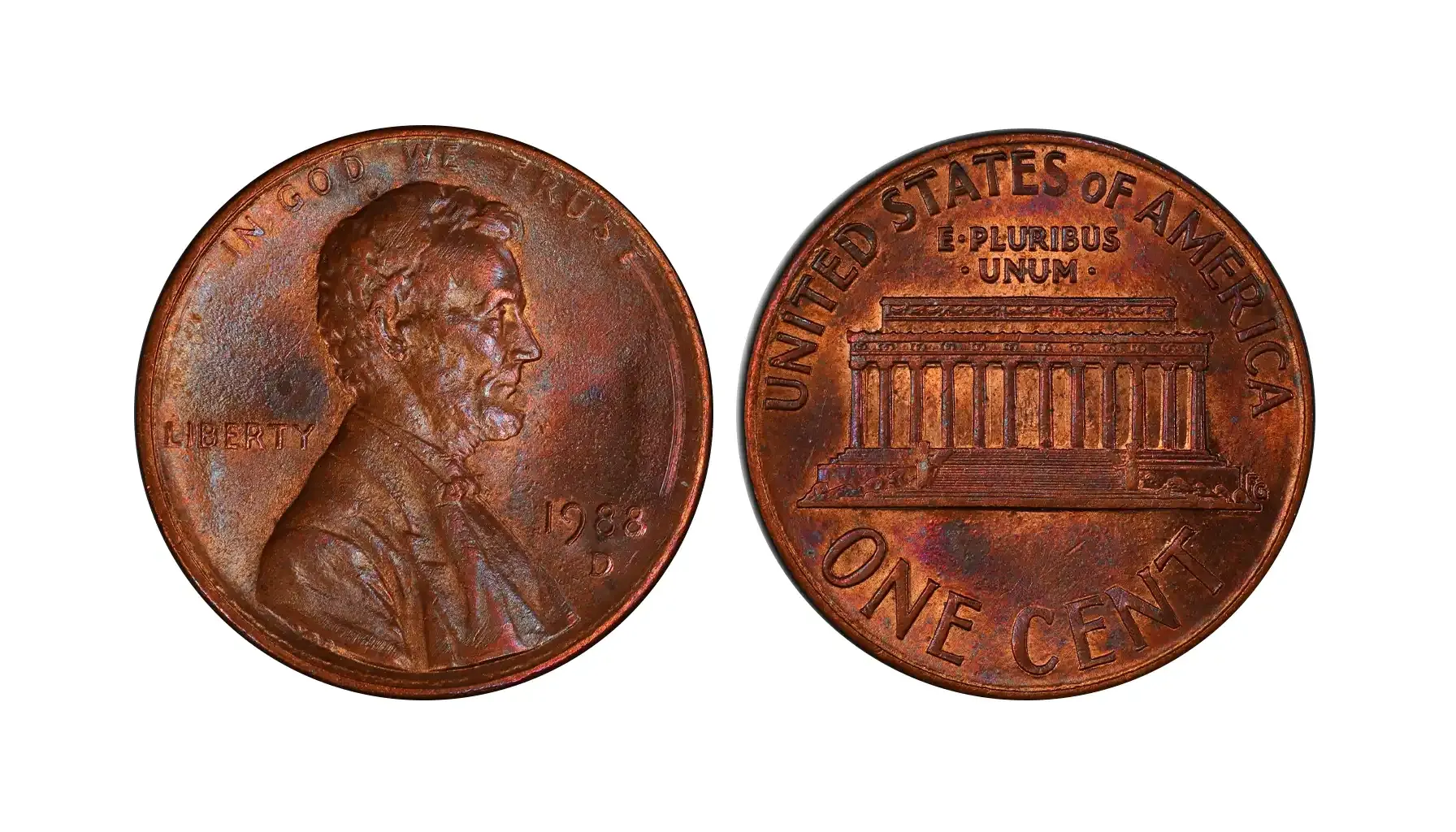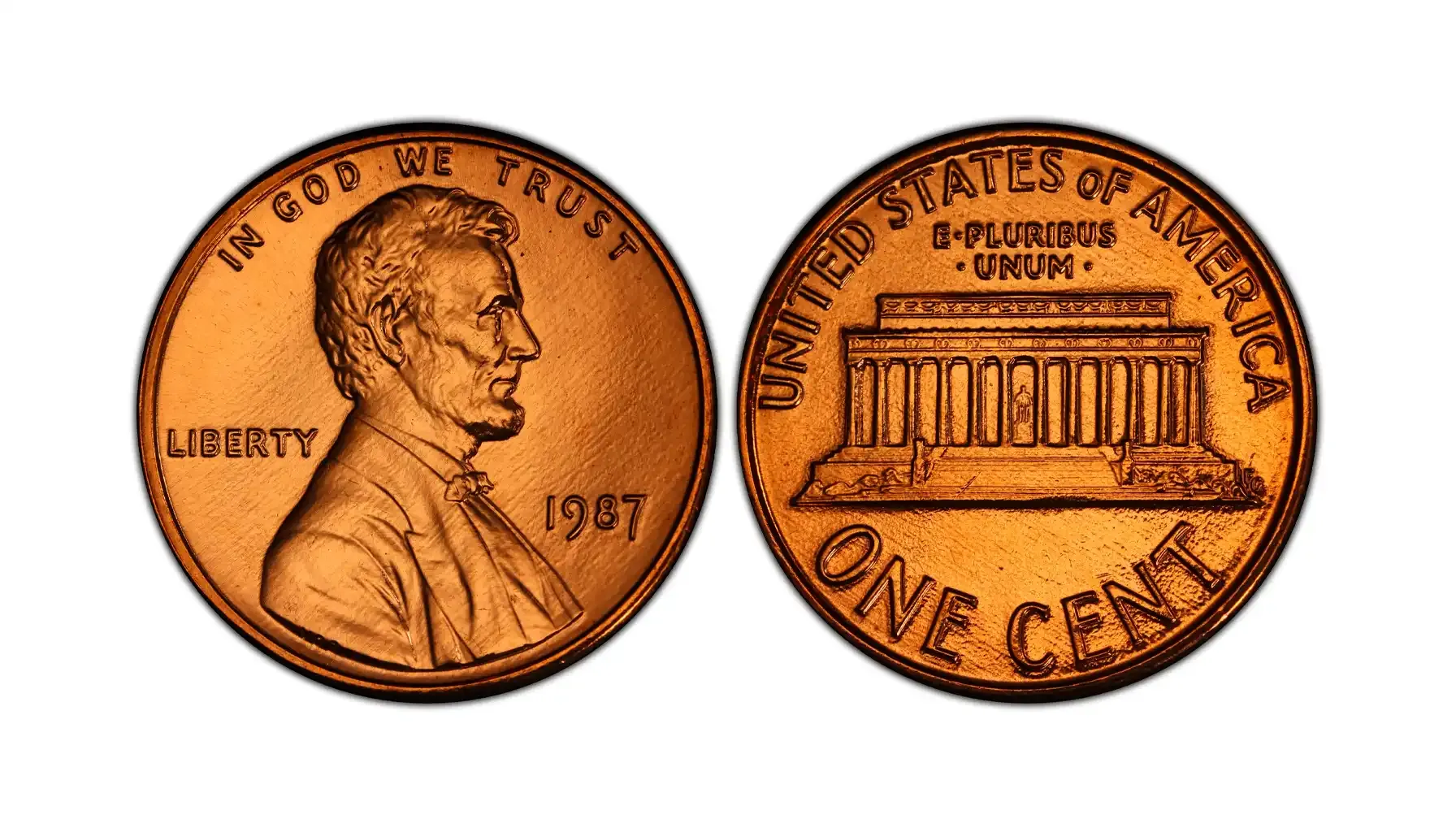Contents:
Determining the value of any coin, including the 1978 Roosevelt Dime, hinges on several universal factors:
Mintage figures: This refers to the total number of coins originally produced at a specific mint in a given year. A low mintage figure generally suggests a rarer coin and, consequently, a higher potential value.
Survival rates: Even if a coin had a high original mintage, its actual rarity to collectors depends on how many pieces have survived over time in various conditions. Many coins are lost, melted down, or damaged beyond recognition, making the surviving population the true measure of availability.
Condition: A coin's grade describes its state of preservation, ranging from heavily worn (low grades) to perfect (high uncirculated grades). A well-preserved coin with minimal wear, sharp details, and strong original luster will always be worth significantly more than a heavily circulated one, even if it's the same date and mint mark.
Desirable Features: Beyond the basic grade, certain specific issues possess highly sought-after features that can add a substantial premium to their value. "Full Head" on Barber Dimes, where the details of Liberty's head are crisp and complete, commands a premium.
Mint Errors and Varieties: These are distinct deviations from the normal manufacturing process that occur at the mint, making the coin unique and often highly collectible. The imperfections transform an otherwise common coin into a rare collectible.
AI Coin Identification Tools: In the modern numismatic landscape, the online coin identifier can be a valuable and increasingly sophisticated tool in assessing these characteristics. By analyzing images of coins, AI can quickly assist in identifying the mint mark, the coin type, and provide preliminary insights into its potential grade.
The 1978 No Mint Dime Roosevelt (Philadelphia)
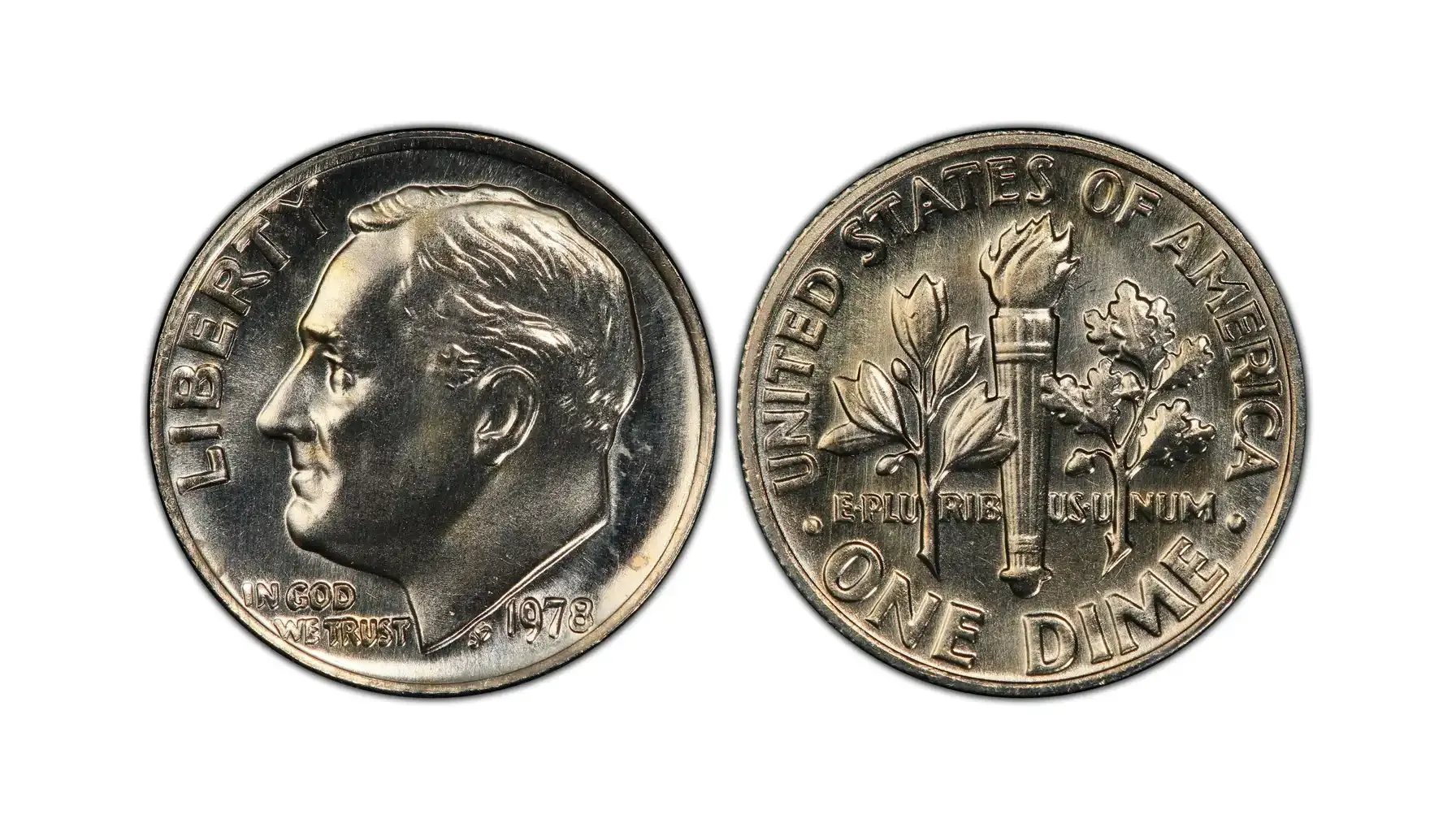
The 1978 Roosevelt Dime with no mint mark was struck at the Philadelphia Mint.
As the primary U.S. Mint, Philadelphia produced a massive quantity of dimes for circulation in 1978. With a mintage of 963,780,000, these coins are extremely common in all circulated grades. Uncirculated examples are also readily available, and finding a high-grade example (MS-65 or higher) with Full Bands is where some numismatic value begins to emerge.
It is important to note that the 1914 Dime refers to the Barber Dime, which was a silver coin issued in an earlier era and is completely distinct from the Roosevelt Dime issued in 1978.
Specifications:
Composition: 75% Copper, 25% Nickel
Weight: 2.268 grams
Diameter: 17.91 millimeters
Edge: Reeded
Mintage: 963,780,000
Designer: John R. Sinnock
Market Value
Grade | Approximate Value (USD) |
G-4 | $0.10 |
VF-20 | $0.15 |
AU-50 | $0.25 |
MS-60 | $0.50 |
MS-63 | $0.75 |
MS-65 | $1.50 |
MS-65 FB | $5.00~ |
MS-66 FB | $20.00~ |
The 1978 dime no mint mark value varies depending on the coin's condition, market demand, and other factors.
The 1978 Dime D Mint Mark Roosevelt
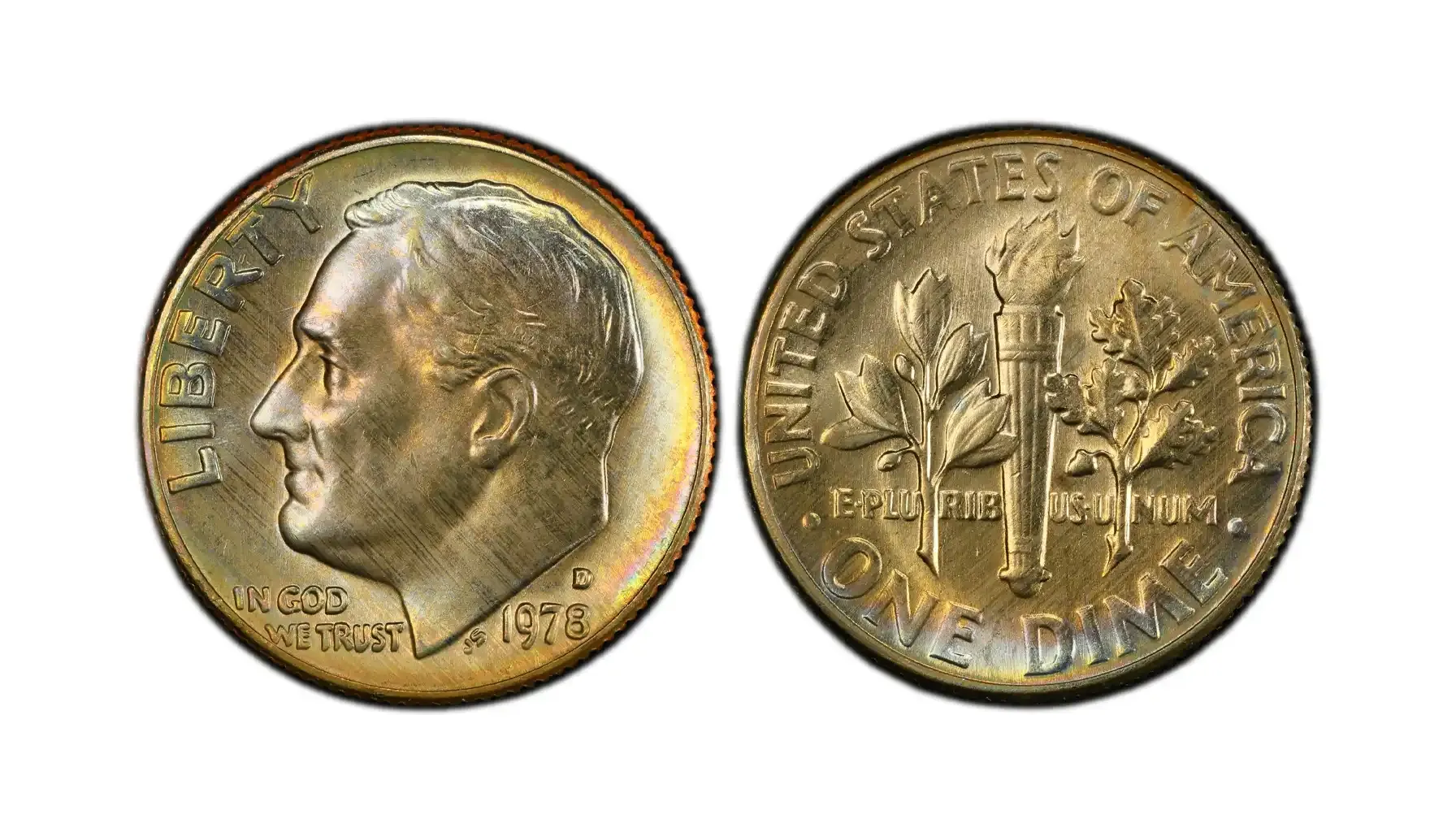
The 1978-D Roosevelt Dime was struck at the Denver Mint.
The Denver Mint also produced a very high number of dimes in 1978, contributing significantly to the nation's circulating coinage. With a mintage of 521,489,170, the 1978-D dime is equally common in circulated conditions as its Philadelphia counterpart.
As with Philadelphia issues, the primary drivers of 1978 no mint mark dime value for this mint mark are high uncirculated grades, especially those exhibiting Full Bands.
Specifications:
Composition: 75% Copper, 25% Nickel
Weight: 2.268 grams
Diameter: 17.91 millimeters
Edge: Reeded
Mintage: 521,489,170
Designer: John R. Sinnock
Market Value
Grade | Approximate Value (USD) |
G-4 | $0.10 |
VF-20 | $0.15 |
AU-50 | $0.25 |
MS-60 | $0.50 |
MS-63 | $0.75 |
MS-65 | $1.50 |
MS-65 FB | $5.00~ |
MS-66 FB | $20.00~ |
The 1978 dime value no mint mark may vary depending on the coin's condition, market demand, and other factors.
The 1978 Dime S Mint Roosevelt (Proof)

The 1978-S Roosevelt Dime was struck at the San Francisco Mint specifically as a Starting in 1968, the San Francisco Mint became the sole producer of U.S. proof coinage. These coins were not intended for circulation and were part of annual proof sets sold to collectors. Proofs feature highly polished fields and frosted, detailed devices, giving them a distinct mirror-like appearance.
While their mintage of 3,144,380 is significantly lower than business strikes, proofs are generally more available in high grades. The value often hinges on the coin's cameo contrast (CAM or DCAM) and absolute perfection of surfaces.
Specifications:
Composition: 75% Copper, 25% Nickel
Weight: 2.268 grams
Diameter: 17.91 millimeters
Edge: Reeded
Mintage: 3,144,380
Designer: John R. Sinnock
Market Value
Grade | Approximate Value (USD) |
PR-60 | $1.50 |
PR-63 | $2.00 |
PR-65 | $3.00 |
PR-67 | $5.00 |
PR-68 | $10.00~ |
PR-69 DCAM | $25.00 - $50.00~ |
PR-70 DCAM | $100.00~ |
The 1978 S dime value may vary depending on the coin's condition, market demand, and other factors.
Doubled Die Error

This error occurs when the die receives multiple, slightly misaligned impressions from the hub, resulting in a doubled appearance of design elements. A noticeable 1978 dime IN GOD WE TRUST error, such as doubling or missing letters, would be highly sought after by error collectors.
Market Value
Grade and Visibility | Approximate Value (USD) |
AU-50 (Minor) | $10 - $30 |
MS-60 (Minor) | $20 - $50 |
MS-63 (Moderate) | $50 - $150 |
MS-65 (Moderate) | $100 - $300~ |
MS-66~ (Strong) | $300 - $1,000~ |
How much is a 1978 dime with no mint mark worth may vary depending on the coin's condition, market demand, and other factors.
Off-Center Strike Error
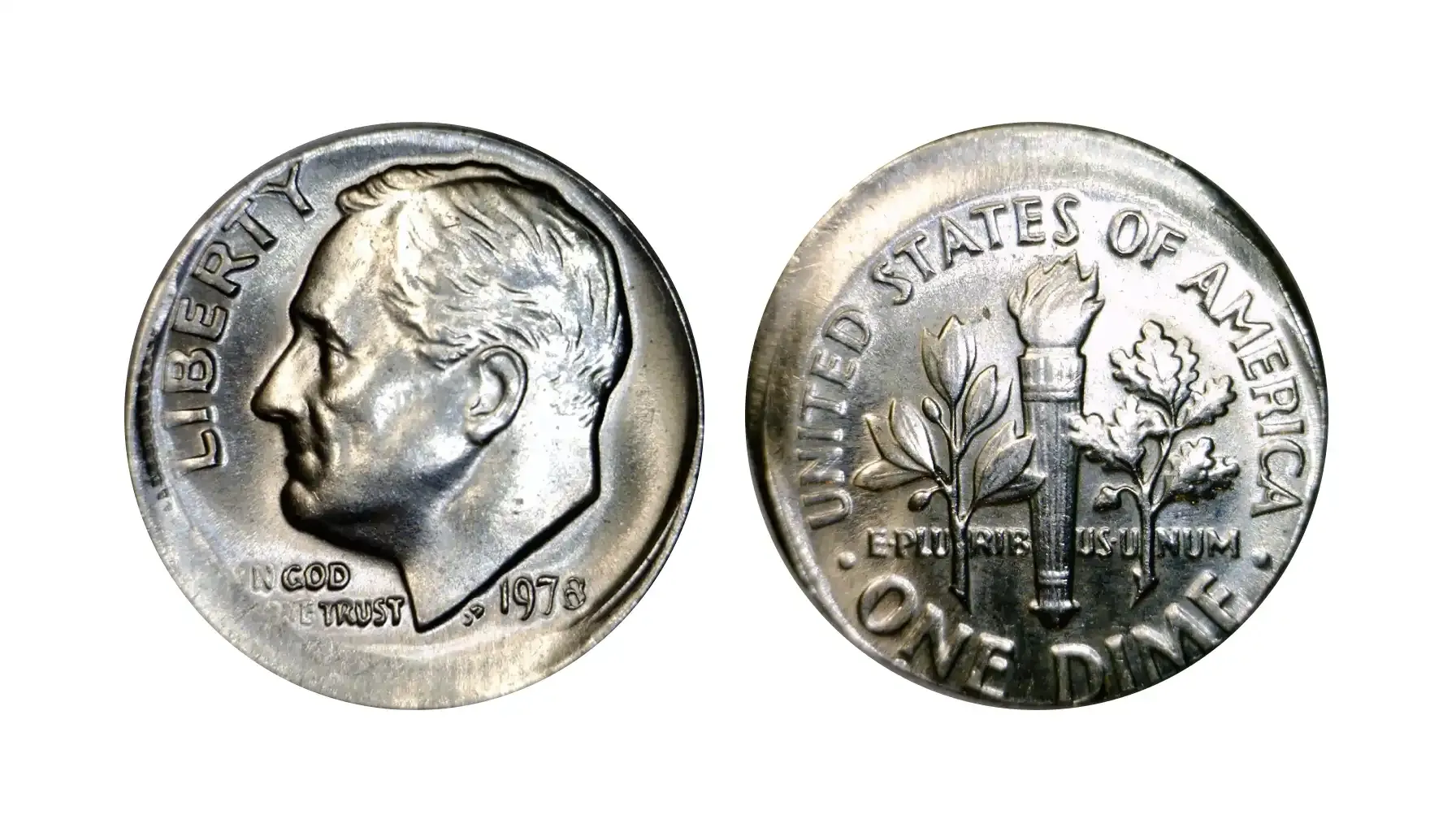
Serious collectors actively seek out 1978 dime errors like doubled dies or off-center strikes. An off-center strike occurs when the planchet is not properly centered between the dies when the coin is struck, resulting in part of the design being missing and a blank area visible on one side.
How much is a 1978 dime worth depends on the degree of off-centerness and whether the date and mint mark (if applicable) are still clearly visible. More dramatic off-center strikes (e.g., 25% or more off) are more valuable.
Market Value
Degree Off-Center (Date Visible) | Approximate Value (USD) |
10% Off-Center | $20 - $50 |
25% Off-Center | $50 - $150 |
50% Off-Center | $150 - $400 |
75%~ Off-Center (Dramatic) | $400 - $1,000~ |
The answer to "is a 1978 dime worth anything?" may vary depending on the coin's condition, market demand, and other factors.
Filled Mint Mark Error
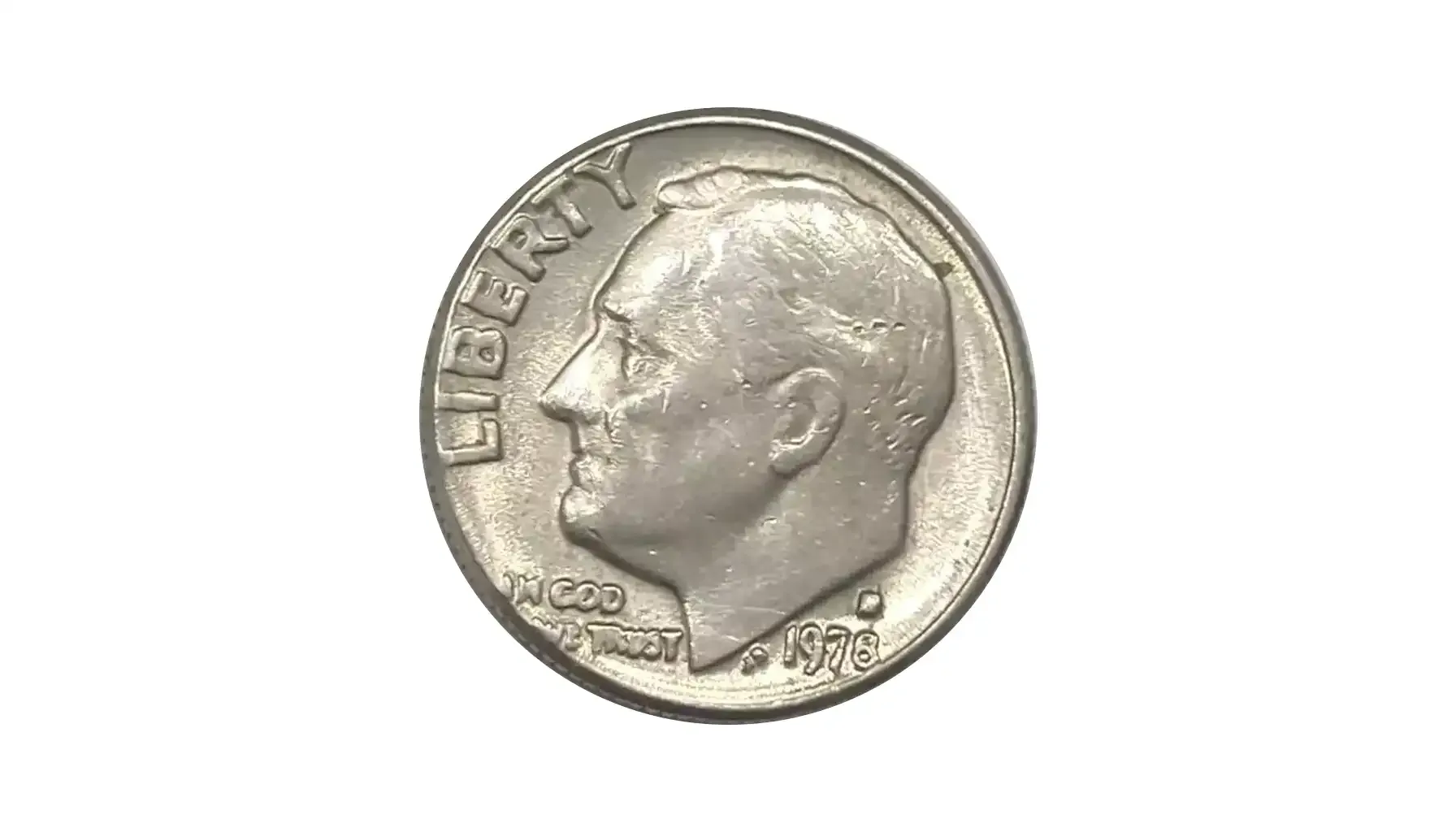
This error occurs when the mint mark (D or S for 1978 dimes) becomes partially or completely filled with grease or foreign material that accumulates on the die. When the coin is struck, the filled area of the die does not transfer the full impression of the mint mark to the coin, resulting in a weak, blob-like, or even absent appearance of the letter.
This is distinguishable from a coin with no mint mark (Philadelphia) because a trace of the mint mark, or evidence of it, can often still be seen, or the coin's overall strike quality suggests it's not a Philadelphia issue. The value depends on the degree of the fill.
Market Value
Degree of Fill | Approximate Value (USD) |
Partial Fill | $5 - $20 |
Significant Fill | $20 - $75 |
Near Complete Fill | $75 - $200~ |
The listed price may vary depending on the coin's condition, market demand, and other factors.
Broad Strokes Error
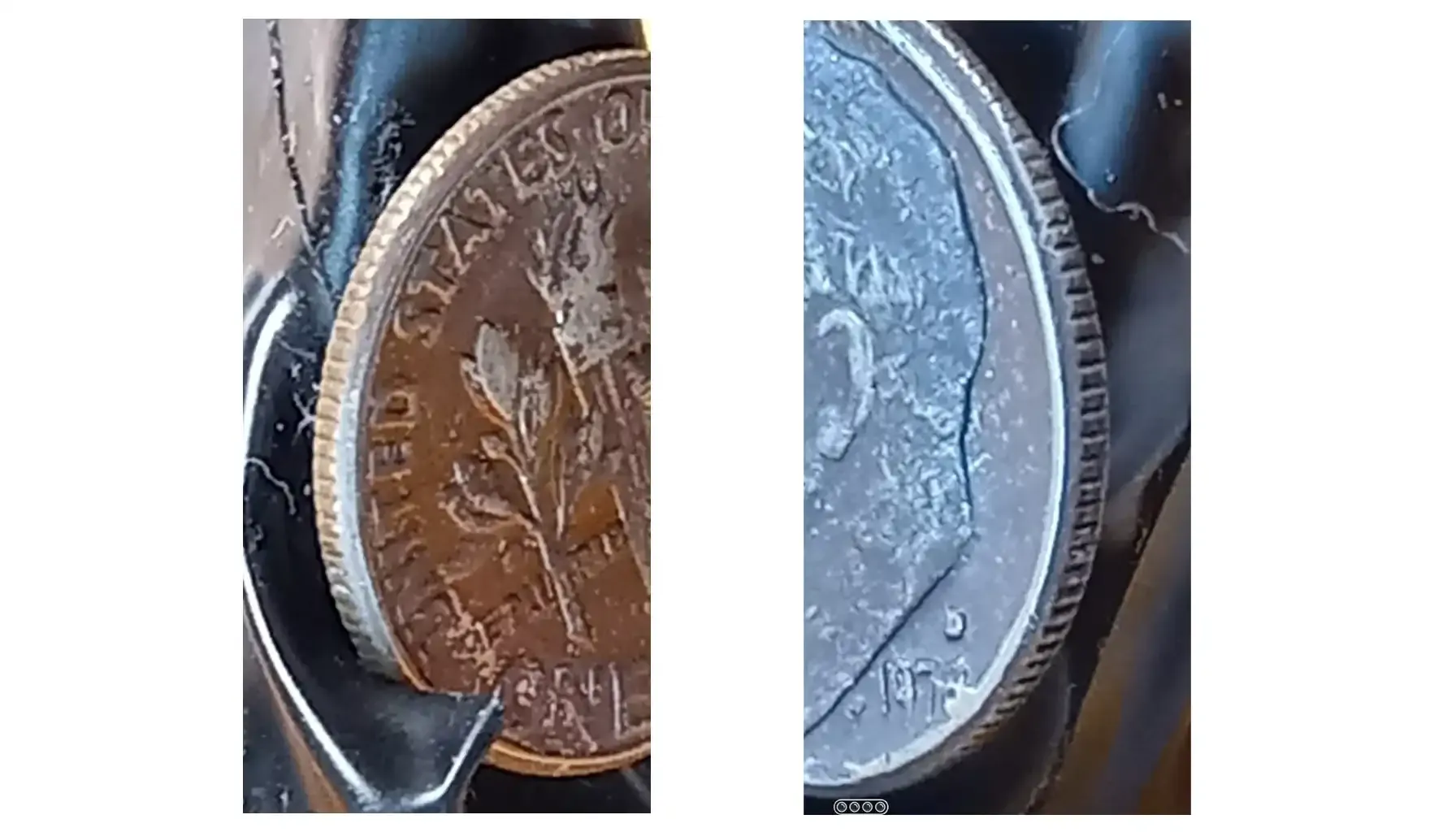
A broad strike occurs when the retaining collar, which normally confines the expanding metal during striking, is either absent or improperly aligned. This causes the coin to expand outward beyond its normal diameter, resulting in a wider, flatter appearance with a missing or incomplete reeded edge. The entire design remains on the coin.
Market Value
Grade | Approximate Value (USD) |
AU-50 | $25 - $75 |
MS-60 | $50 - $150 |
MS-63 | $100 - $300 |
MS-65~ | $200 - $500~ |
The 1978 dime value today may vary depending on the coin's condition, market demand, and other factors.
Struck Through Error

Any dime 1978 can be a fun find, but specific mint marks or errors are key for numismatic value. This error occurs when a foreign object or debris (such as grease, lint, or metal shavings) gets between the die and the planchet during the striking process. The value depends on the size, nature, and clarity of the struck-through object's impression. Notable "struck through" errors can include partial letters, numbers, or even wire strikes.
Market Value
Prominence and Type | Approximate Value (USD) |
Minor Grease (Circulated) | $5 - $15 |
Minor Grease (Unc) | $10 - $30 |
Moderate Struck-Through | $20 - $75 |
Significant Struck-Through | $75 - $300~ |
The 1978 P dime value may vary depending on the coin's condition, market demand, and other factors.
Die Breaks Error
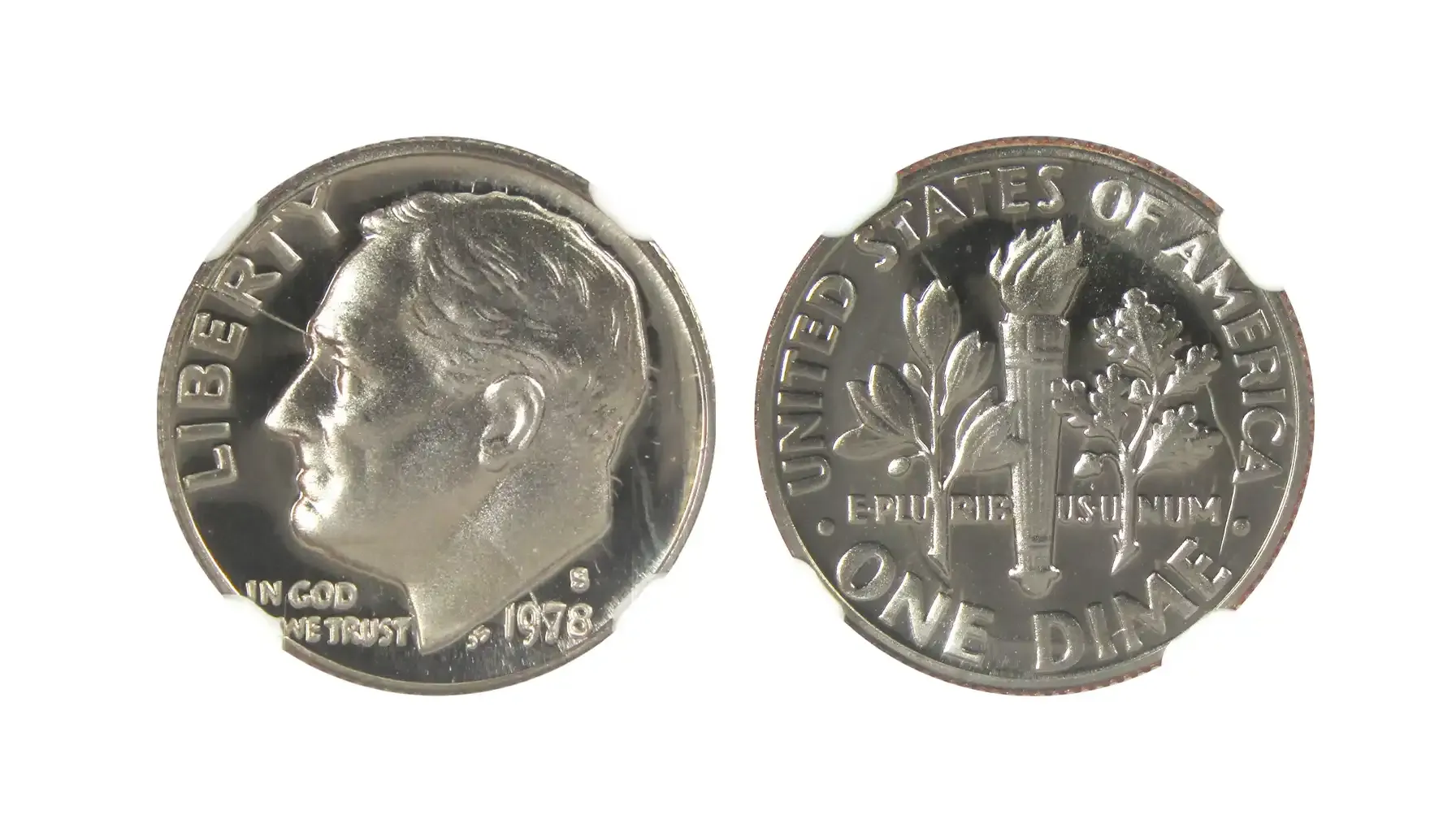
Researching a 1978 D dime error list with pictures can help enthusiasts identify rare minting imperfections. Die breaks are cracks that develop in the die due to stress, which then transfer to the struck coin as raised lines or lumps. Die chips are small pieces of the die that break off, resulting in raised blobs on the coin. While minor die breaks are common, large or dramatic die breaks can significantly increase value.
Market Value
Prominence | Approximate Value (USD) |
Minor/Common | $5 - $15 |
Moderate/Noticeable | $15 - $40 |
Significant/Large | $40 - $100~ |
Cud (Major Rim Break) | $100 - $500~ |
The 1978 dime no mint mark error may vary depending on the coin's condition, market demand, and other factors.
Clipped Planchet Error
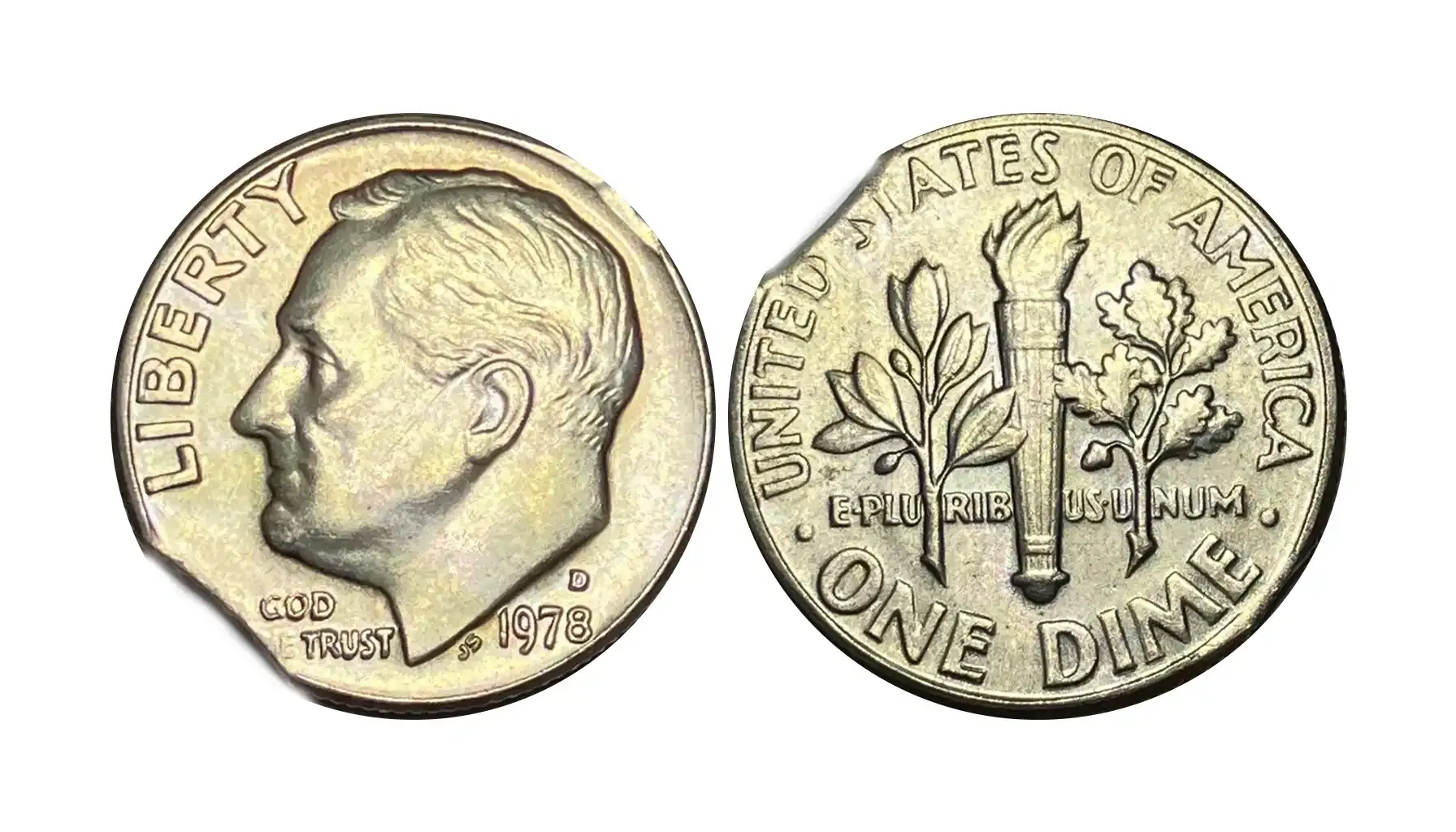
Although clad, the core of a 1978 copper dime is pure copper, which can sometimes be exposed by damage. A clipped planchet error occurs when a blank coin is incomplete, having a missing curved section along its rim. This happens when the punch that cuts the blank from the metal strip overlaps with a previously punched hole.
Market Value
Size of Clip | Approximate Value (USD) |
Minor (1-5%) | $10 - $30 |
Moderate (5-15%) | $30 - $80 |
Major (>15%) | $80 - $250~ |
The 1978 dimes worth money may vary depending on the coin's condition, market demand, and other factors.
The 1978 Roosevelt dime functions as a standard coin in the general market yet attracts collectors through its proof editions and the various mint error patterns that may appear. People must grasp how grading methods work alongside mint marks and error categories to evaluate coins properly before recognizing their significance within contemporary American numismatic collecting.


